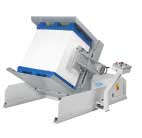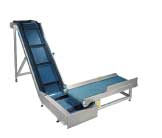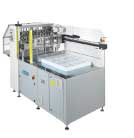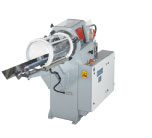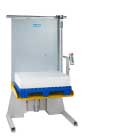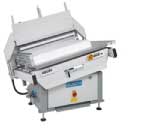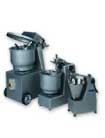Busch have been manufacturing ram punches for almost 40 years – originally for the label sector. They are now widely used right across the printing and packaging industries.
What can be diecut by a ram punch?
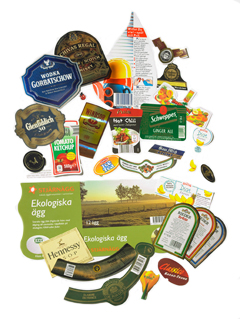 There are very few outer contour shapes which cannot be ram punched, including:
There are very few outer contour shapes which cannot be ram punched, including:
- square-cut material
- promotional products
- direct mail items
- Post-It type notes
- food or drink labels
- telephone cards
- garment tags
- most types of materials can be made to work (including paper, board, plastic or polypropylene)
For print finishers
- A ram punch can also punch stitched, folded booklets – on 3 sides – so that Busch punches are of increasing interest to print finishers
How it works
Busch ram punches work by pushing the material through the die to create the desired shape. The Busch concept of punching has long been recognised for its precision and productivity.
- Square-cut stacks of printed material are placed in the feed tray, between the die and the ram.
- When the ram is activated it pushes the stack of material through the die onto the delivery tray – the size of the finished article will determine the model of punch required – up to a maximum of 380x330mm.
- The waste margin (2–3mm) is removed with the aid of a waste slitter blade, and falls down through the machine, to be removed into a waste container by the accompanying Busch waste conveyor.
- The material can be zero-punched, where the whole stack is punched, or alternatively a small quantity of material can be left in front of the die after each stroke. A soft backing plate on the ram protects the edge of the die when zero-punching. Those models with light barriers work by the stroke being activated automatically when the operator removes his/her hand from the feeding tray. The operator determines the working speed of the machine.
An aluminium die-positioning block is supplied as standard, enabling the operator to set up each job off-line, safely and accurately. The die is positioned on the block, with fine adjustments made on the machine once the die has been fixed by the holding arms.
Counter pressure and tolerances
A counter-pressure device would be used where tight tolerances are required or where the material to be punched is unstable – especially for punching polypropylene for in-mould labels (IML).
The counter-pressure device can be retro-fitted and wheels up to the punch in place of the delivery tray, which in turn is wheeled away on a trolley. The die is manufactured especially for counter-pressure punching, with a matrix of plastic/nylon inside the die.
The counter-pressure system is connected to an air supply, so that when the hydraulic pressure of the ram pushes the material through the die, the material is held vertical by the matrix – thereby stabilising the pile and ensuring that no movement occurs. When the ram reaches the end of its stroke and retracts, the material is pushed back through the die by the counter-pressure system (pneumatically) finishing back in the feed tray. This reduces throughput of the punch by half, since the material is fed and removed from the same place – the delivery tray having been removed to fit the counter-pressure unit.
